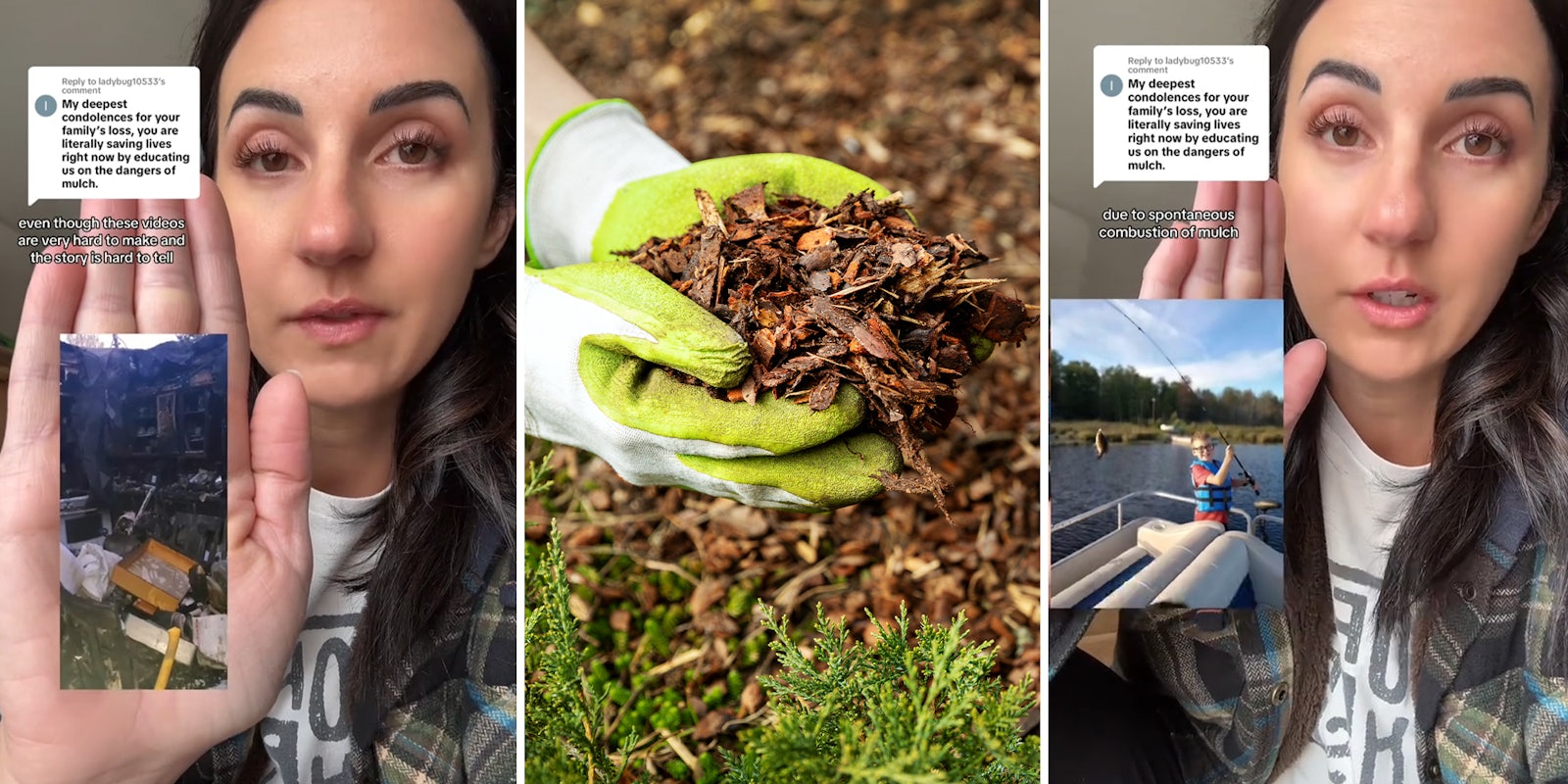In a heart-wrenching series of TikTok videos viewed over 5 million times, Vashti (@revivedbyvashti) shares a personal tragedy to spotlight a lesser-known danger lurking in homes and gardens across the country: Spontaneous combustion from mulch.
Through her story, where a nephew died in a fire and another had serious burn injuries, Vashti underscores the importance of carefully handling staining rags and mulch to prevent catastrophic fires.
“This is my sister and nephews, and this is our reality,” Vashti begins, drawing a parallel between the tragic fire ignited by mulch at her family’s home and the similar risk posed by improperly managed staining rags.
“Although this fire did not start from staining rags, it is very similar,” she explains, detailing how the fire began in the mulch before spreading to the front porch, where it intensified after reaching a propane tank. Her message is clear: “This might save a life.”
Another was thankful for the video: “This is the FIRST I have heard this!!!”
“So heat is not even needed in this case?” asked one person. “I’m guessing since it started at midnight. That’s so crazy.”
A person replied, “It’s the same with resin/epoxy. I used to work in a fiberglass shop; our cups of resin would catch fire constantly.”
Vashti elaborates on the chemical process that makes mulch a fire hazard, stating, “Your mulch is colored with staining agents, and what happens is, as that stain is oxidizing, if it gets trapped with oxygen, if the weather conditions are just right, it can actually create a fire.”
She emphasizes the similarity to the danger staining rags pose when left in piles, as they, too, can spontaneously combust under certain conditions.
In response to overwhelming feedback from her initial video, Vashti further educates her audience on spontaneous combustion in mulch and other organic materials like wood chips and compost piles. “As these organic materials break down and decompose, oxidation occurs, and this process is what generates the heat,” she explains, adding that certain weather conditions can exacerbate this effect, leading to fire.
Vashti’s poignant message is supported by the National Fire Protection Association and Home & Gardens, highlighting the dangers of improperly managed mulch and staining rags. According to these sources, the heat generated by the oxidation process in mulch can lead to ignition, especially when the material is compacted or piled up too thickly. Similarly, staining rags should never be left in a pile; instead, they should be spread out to dry away from buildings and then stored in a metal container with a water and detergent solution to break down the oils.
One person asked, “So this won’t happen with a water-based stain?” She replied, “Correct. They don’t have flammable oils. Water is the solvent, so they won’t spontaneously combust.”
Through her videos, Vashti shares her personal loss and offers practical advice on preventing such tragedies. She urges her viewers to properly manage staining rags by laying them flat to dry and disposing of them safely in airtight containers. She also advises researching mulch alternatives and proper care if mulch is used to mitigate the risk of spontaneous combustion.
@revivedbyvashti #stitch with @BreeAna Lee This can save lives #staindanger #housefiresurvivor ♬ original sound – RevivedByVashti
A commenter in one of her videos said, “My friend’s house burned down because of a staining rag when they were remodeling! I had never heard anyone else talk about it! This is important!”
Vashti’s heartfelt campaign to raise awareness about the hazards of mulch and staining rags is a crucial reminder of the importance of safety precautions in everyday activities. Her message, propelled by the tragic loss of her nephew, resonates with millions, potentially saving lives by highlighting the risks of spontaneous combustion associated with seemingly innocuous household and gardening materials.
The Daily Dot contacted Vashti for comment.


